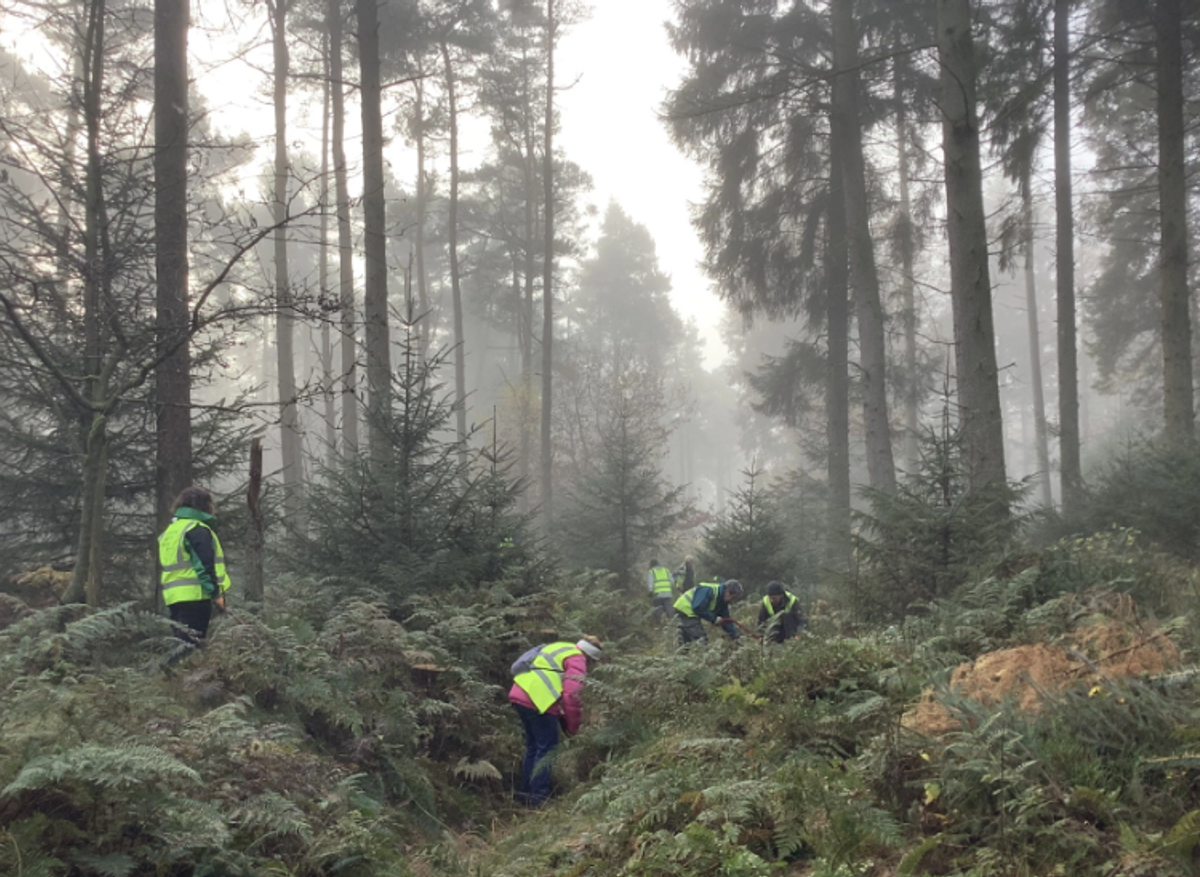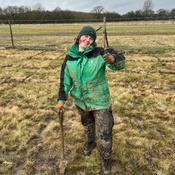It was September 1919 when the Forestry Commission was founded, to restore the nation’s forests following the First World War and to provide a sustainable domestic supply of timber for the country. Hidden within the Nation’s Forests are some of the best archaeological sites, historical buildings and designated landscapes found in England. Where some may expect Forestry to be damaging to archaeology, the heritage and archaeology within our Forests is frozen in time and preserved through careful and intentional management.
Nationally there are over 850 scheduled monuments on Forestry England land, and that’s where I come in! In Forestry England’s Yorkshire District, we look after 238 scheduled monuments, of which over two thirds are barrows, 2 are listed buildings and 1 is a registered park and garden, in addition we have tens of thousands of unscheduled monuments that are known and mapped and looked after.
The archaeologies and landscapes I encounter in this role stretch across time, from Neolithic pits and linear boundaries to Bronze age barrows, Roman roads to18th-20th Century rabbit warrens, post medieval field boundaries to WW1 training remains and just about everything in between! This means I need to have a good general understanding of the land uses and histories of the forests in Yorkshire District, something which as part of my traineeship I am slowly learning about through osmosis, research and site visits!
As a trainee historic environment advisor, I am involved with all stages of the forest lifecycle, from trees being planted and looked after right through to being felled for sustainable timber. During the internal consultation period for planned forestry works, I advise on the impact the works will have on our historic environment and advise Foresters on ways in which we can mitigate impact. This can take many forms, but can include advice on best places to drive machines to avoid ground disturbance, requesting more trees are taken out to increase buffer zones around monuments or requesting brash mats are built and used to ensure machines aren’t disturbing features or potential features.
As well as being commercial timber plantations, Forestry England sites are popular places for people to enjoy, taking in the tranquillity, privacy and fresh air benefits of being in the Forest. So, I also advise on recreation events and decisions to ensure the historic landscape remains protected and not threatened by human activity. This can range from advising on fence or boulder locations for monuments at risk of damage from cyclists or 4x4 users, asking for a change of running race route to avoid eroding ancient linear boundaries, or working with our bank of volunteers to go and remove regenerating tree and scrub growth from atop monuments to maintain their favourable condition.
Each scheduled monument we steward has an associated management plan. This document is renewed 5 yearly and details the condition and management direction for each of our 238 scheduled monuments in Yorkshire District. In between the plan renewals there is a programme of site visits to keep up with, to ensure someone has had a good look at each site to ensure the condition is maintained and preserved in line with Historic England’s guidance on the management of scheduled monuments.
Other aspects of my role include the maintenance and currency of the HER records within our internal GIS mapping system, ForesterWeb. ForesterWeb holds HER data and internal data for a variety of different Forestry operations, from compartments of forest so Foresters know when trees were planted and when they need to be thinned out or felled, bike trail routes for the recreation team, conservation data for the ecologist and most importantly for me, detailed mapping of all heritage features, designated or otherwise. This data comes from internal surveys, contracted surveys and local HERs. My role includes ensuring the data on ForesterWeb is up to data, and yearly reaching out to HER officers to request any updates so we are always up to date on our information.
As you can see, my role as a trainee historic environment advisor in Forestry England is incredibly varied day to day and was an area of archaeology that I never even considered when studying at university. I have come to learn that Forests are incredible vehicles for incredibly high levels of preservation. Where other features get ploughed away or lost to time, the trees surrounding features in the Forest protect the landscape, allowing us to reap the benefits of learning and knowing our ancestors who called the same landscapes and places home as we do today.


